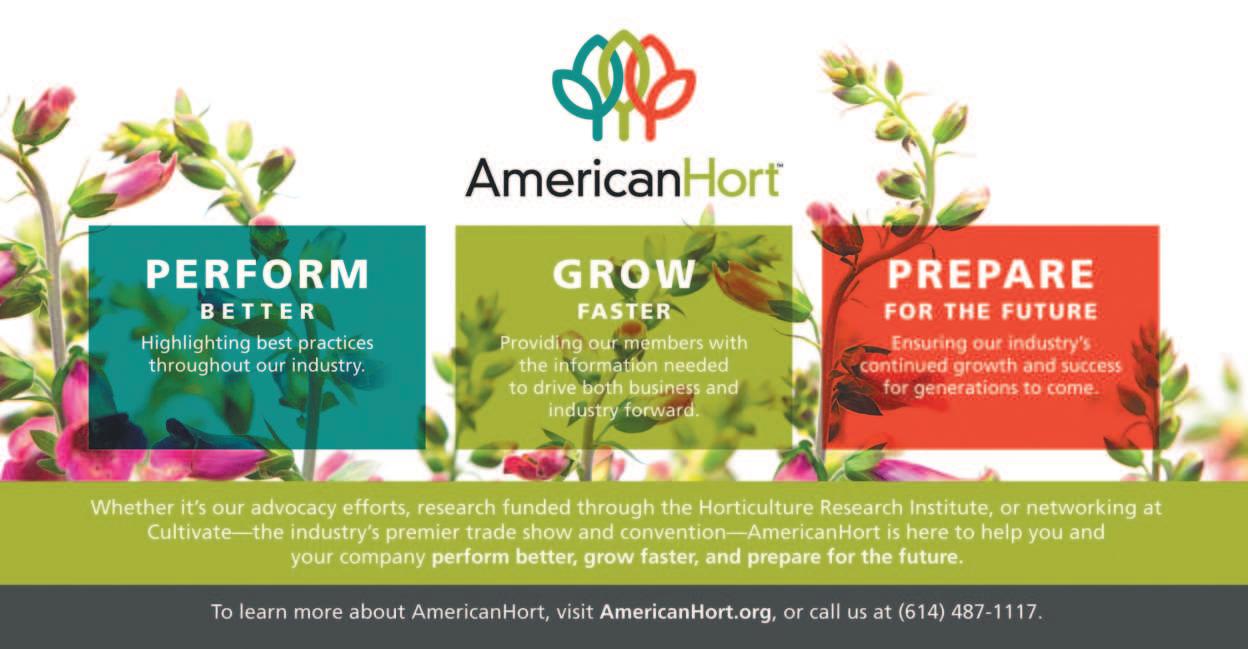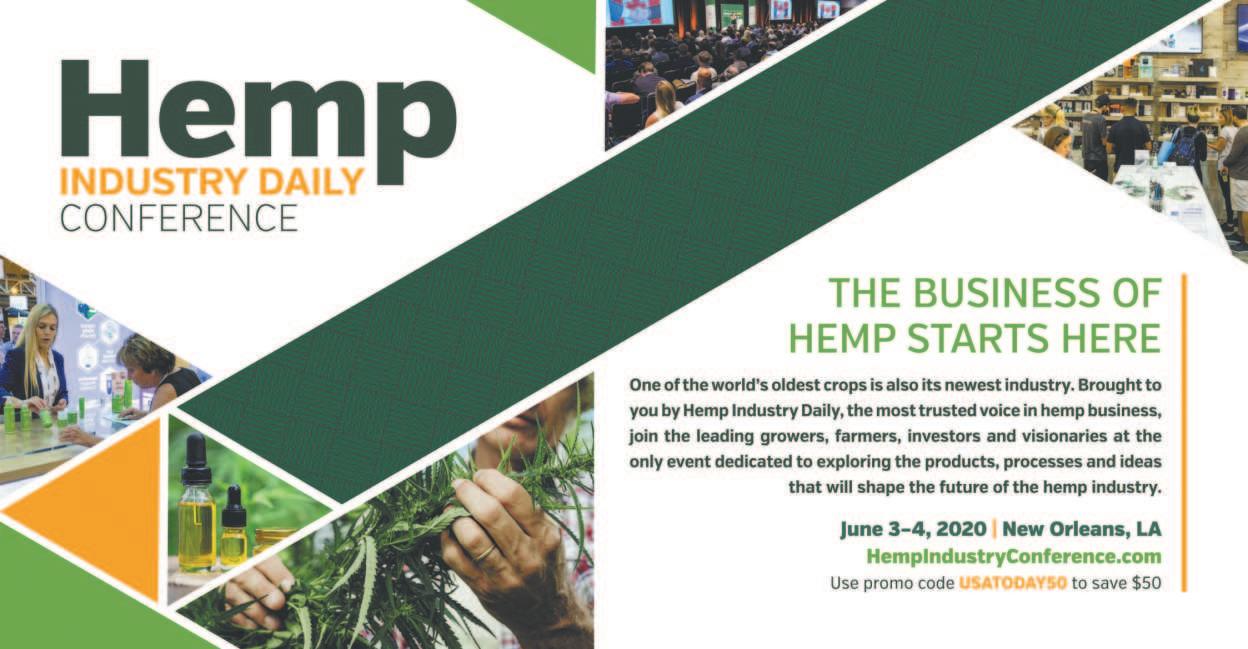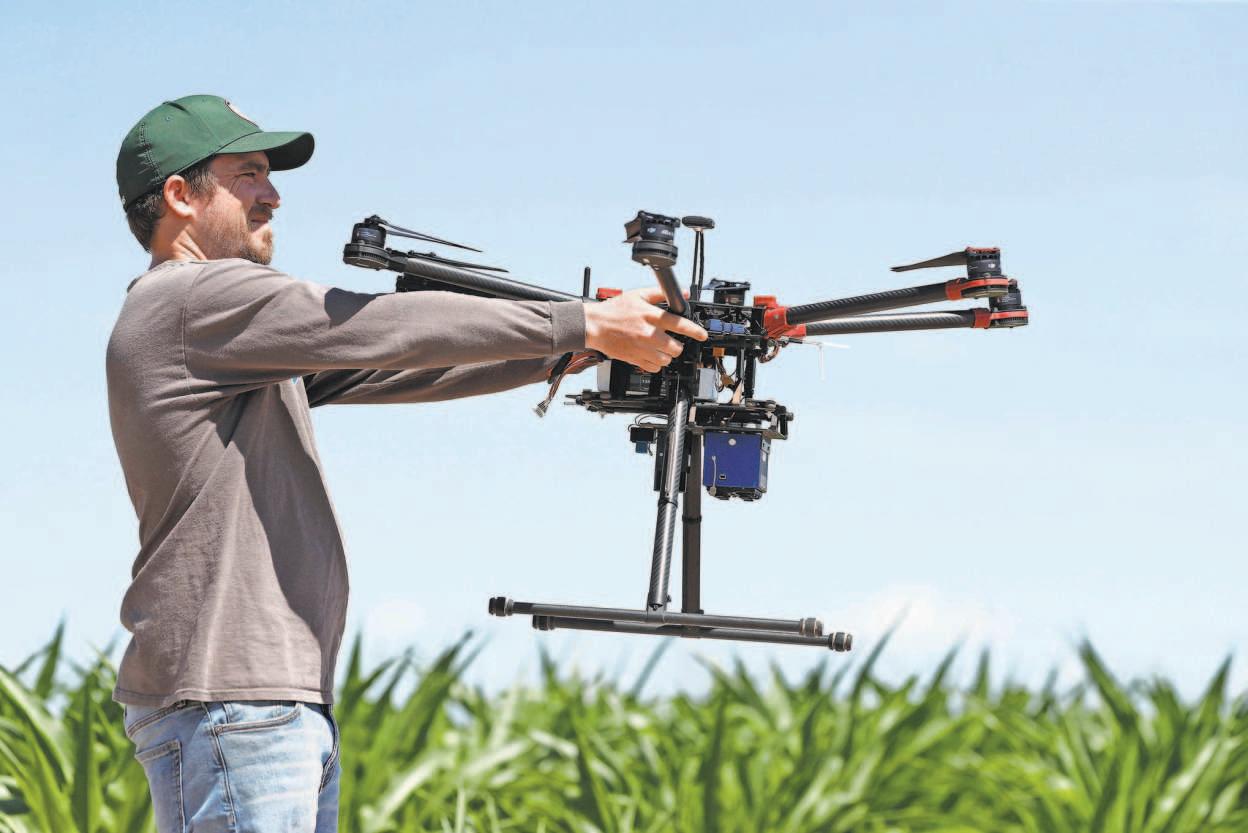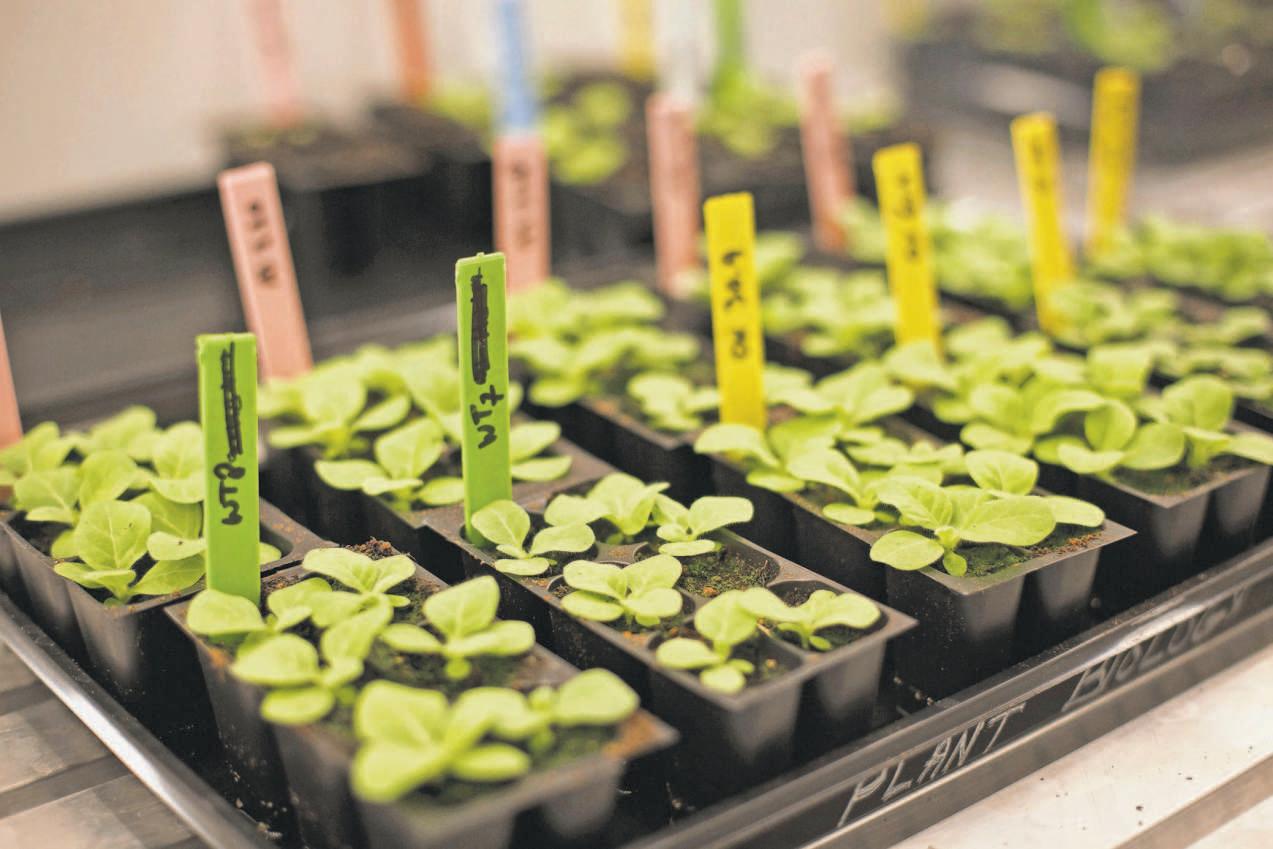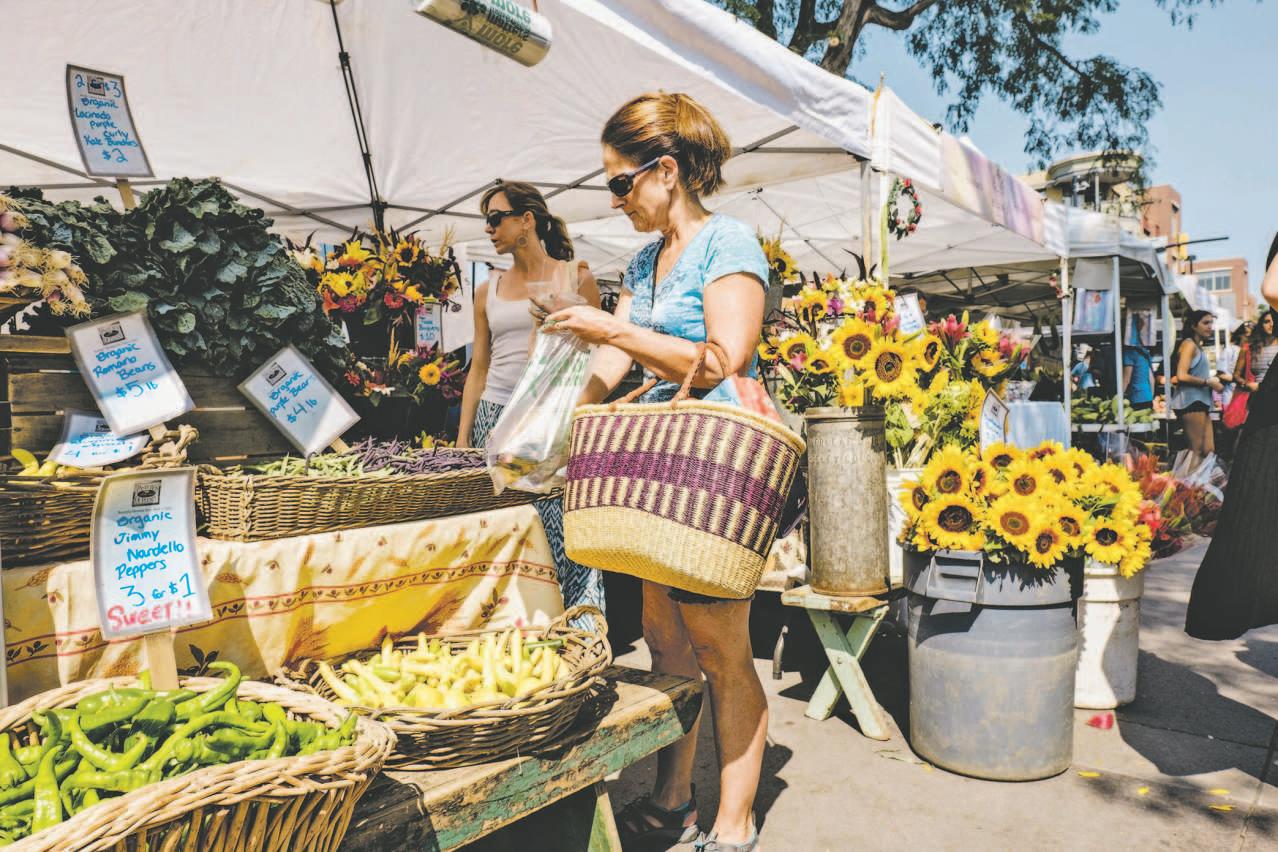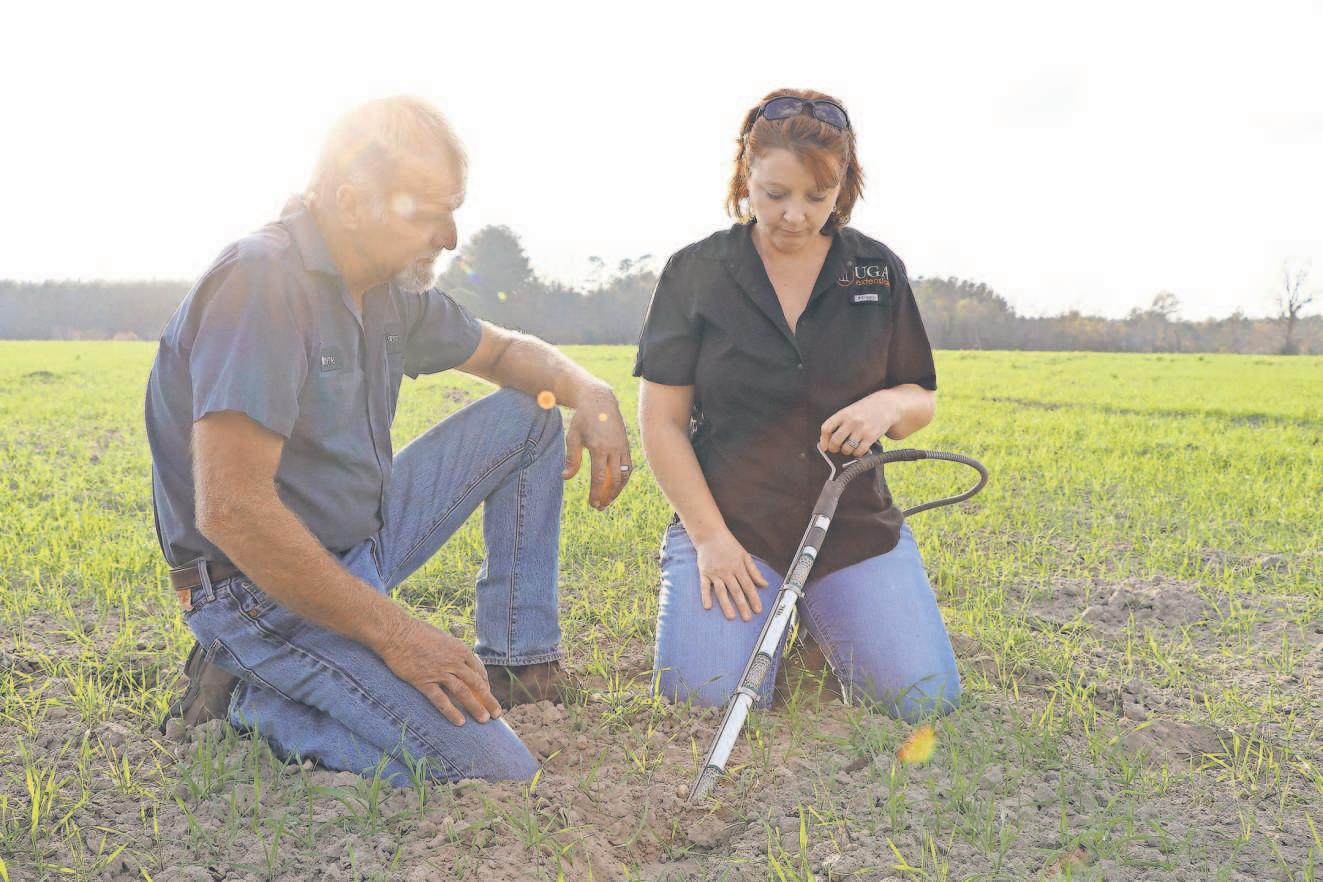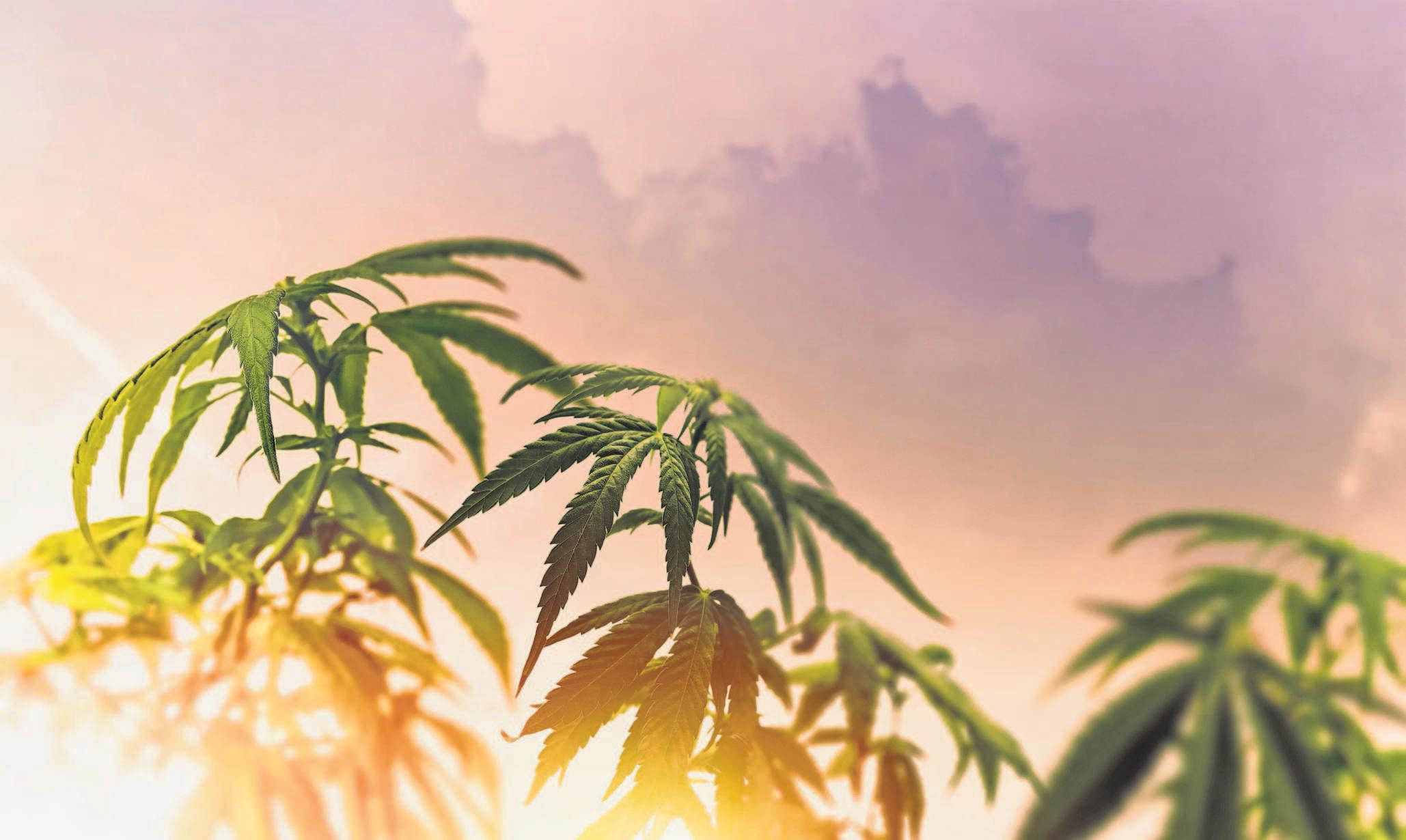
5 minute read
HEMP IN THE HEARTLAND
NEWS
Harvesting Hemp
Experts advise farmers take chill approach to hot crop
By Donnelle Eller
THE DEPARTMENT OF AGRICULTURE released rules last October that will govern how farmers grow industrial hemp, a crop that promises new revenue for financially struggling growers. The regulations will guide hemp production, including licensing farmers, crop testing and the possible destruction of plants that don’t meet THC requirements. THC is the active ingredient in cannabis that gets people high.
It’s a big step for farmers hoping to tap into a rapidly growing market for hemp-derived cannabidiol, commonly called CBD, used in everything from pet food to wine to creams that promise minor pain relief. According to market research company Brightfield Group, the $5 billion U.S. market is expected to grow to nearly $24 billion by 2023.
Iowa officials are already developing a state hemp program and are reviewing the federal rule to ensure their work complies with it. The state plan also must receive USDA approval before Iowa’s program can become effective. Although promising, Robin Pruisner, the state entomologist who is helping lead the Iowa Department of Agriculture’s efforts to develop a hemp program, warned that the emerging market could be extremely risky for farmers. Not only are they growing a new crop, but they will also be selling it into a new market that can be tricky to navigate. The 2018 Farm Bill legalized the production of hemp, a strain of cannabis plant that contains low levels of THC.
“I strongly, strongly, strongly promote the concept that no one should plant hemp unless they have a contract to sell it,” Pruisner said. “This isn’t like corn, that you can sell to the elevator or the ethanol plant. You need to know where it’s going and what their requirements are,” such as hitting certain levels for pesticides, heavy metals or other compounds.
“It needs to be sold before you plant it, so you know exactly how to raise it,” Pruisner said. Iowa’s new law restricts farmers to growing just 40 acres of hemp. Farmers also need to make sure they understand how hemp is priced. For example, some farmers told Pruisner they didn’t get paid until their crops were processed, and the plant was backed up for a year. Producers will need to closely
CONTINUED

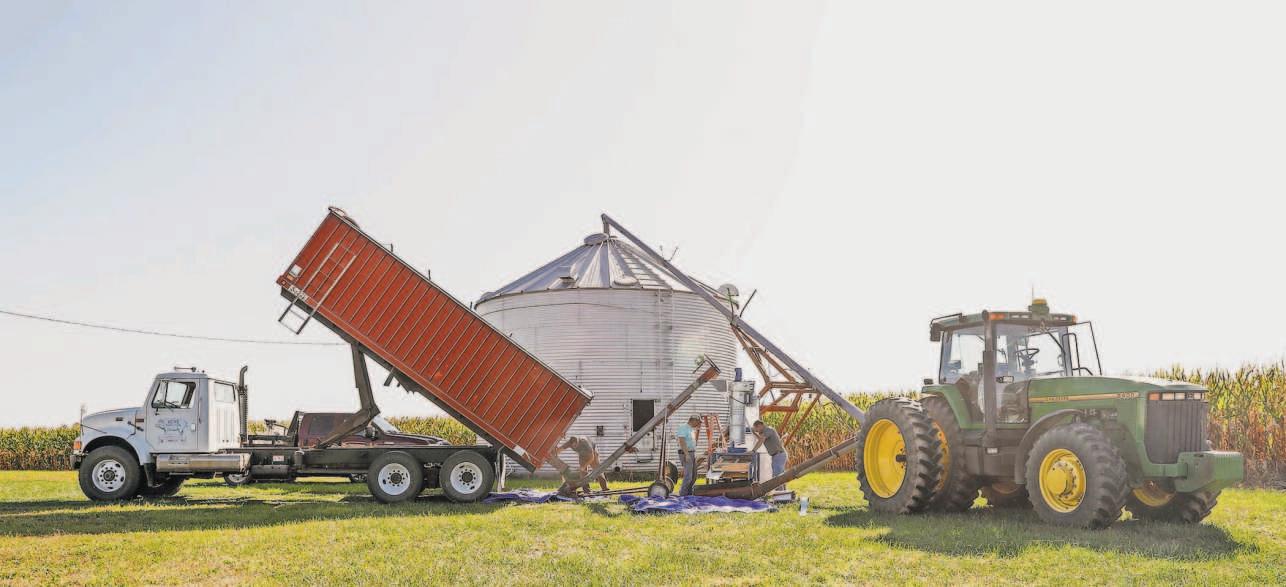
NEWS
Converse, Ind., farmer Mark Boyer has been growing hemp since 2018 as part of a Purdue University research study.
MICHELLE PEMBERTON/INDIANAPOLIS STAR
manage hemp as it grows, testing it to make sure THC levels don’t exceed 0.3 percent. Hemp with higher levels will be destroyed.
An average of 30 percent of the hemp grown in Minnesota ends up exceeding the THC limit, Pruisner said. That leaves farmers with the costs to become licensed, grow and test a crop and no revenue. USDA officials said no crop insurance will cover losses due to high THC levels.
“Farmers will really have to be on their game to manage this crop,” Pruisner said. “It’s not a crop you plant and walk away from.”
Even before planting their first seeds, Iowa farmers will have to apply for a license, which requires them to submit their fingerprints for a background check.
MICHELLE PEMBERTON/INDIANAPOLIS STAR
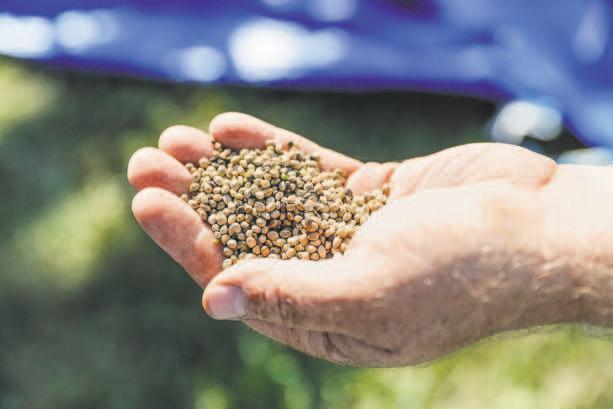
Greg Ibach, USDA’s undersecretary for marketing and regulatory programs, said the number of 2019 hemp acres was expected to increase by about 420 percent as compared with 2018, to a total of around 500,000.
“The experience producers (had last) fall harvesting their crop, handling their crop and finding buyers for their crop will be instructive as to whether we see continued growth in the hemp industry or whether growers take a step back,” Ibach said.
Pruisner said it’s unclear if demand for hemp-derived CBDs and other products will keep pace with the growing supply. “I don’t know if prices will stay up,” she said.
HEMP IN THE HEARTLAND
Legal changes in the past year at both the federal and state level have opened the door on hemp production for the first time in decades. “We are just approaching the starting line,” said Mark Boyer, a farmer in Converse, Ind., on the forefront of growing hemp in his state. “Hemp is in a really awkward place right now, and we have to make a lot of mistakes first before we get this right.”
Robert Waltz, the state chemist and seed commissioner who is overseeing hemp in Indiana, agrees that growers should exercise caution. “Growers need to look at this as a crop with a lot of risk with it,” he said. “That’s the reality, and I think there is a lot of promise, but a lot of homework needs to be done if we want to grow it successfully.”
Indiana is considered the promised land for hemp: The climate is right, as is the soil. “If you look at hemp growing-potential,” Waltz said, “Indiana is the sweet spot.”
Several states, including Indiana, were already growing hemp under the 2014 Farm Bill, which allowed research institutions to seek approval from the Drug Enforcement Administration to grow the crop purely for research. During the summer of 2018, Boyer planted about 10 acres on his farm, alongside his corn, sunflowers and canola, as part of a study with Purdue University. He was among just a few researchers who planted roughly 15 acres total that year.
After the 2018 Farm Bill legalized hemp production, Indiana made quick work of passing its own law during last year’s legislative session to begin the process of creating a state program. As part of Indiana’s law, an advisory committee will help craft a regulatory and licensing program. Boyer and Waltz sit on the committee.
Hemp is a game changer in general, Boyer said, adding that it’s the biggest thing to happen to agriculture in Indiana in his lifetime. He doesn’t want to be seen as overly negative for preaching caution, but he wants to make sure building this industry is done right.
“We may be a little late to the party,” Boyer said, “but we have the opportunity to show up best dressed.”
